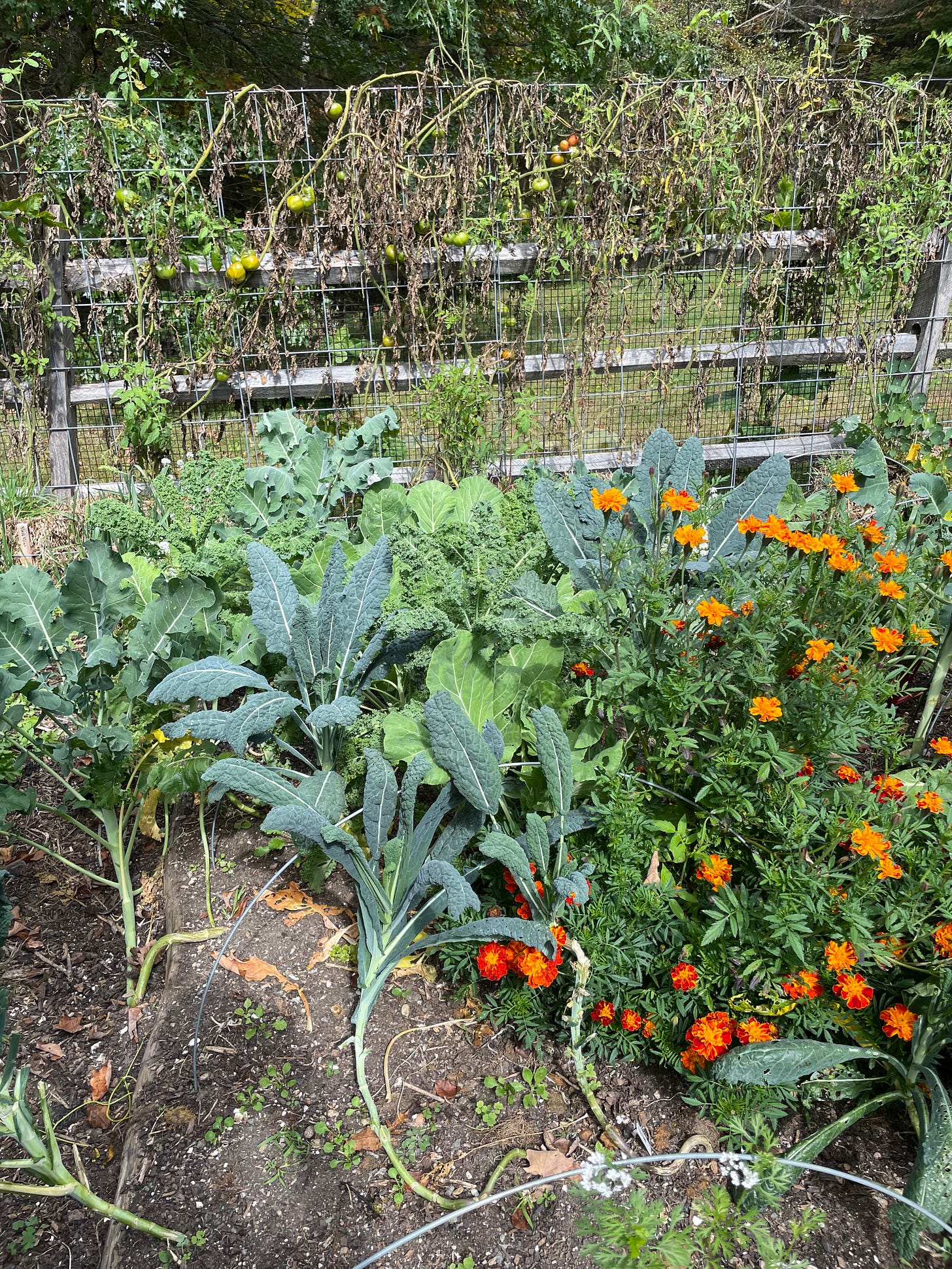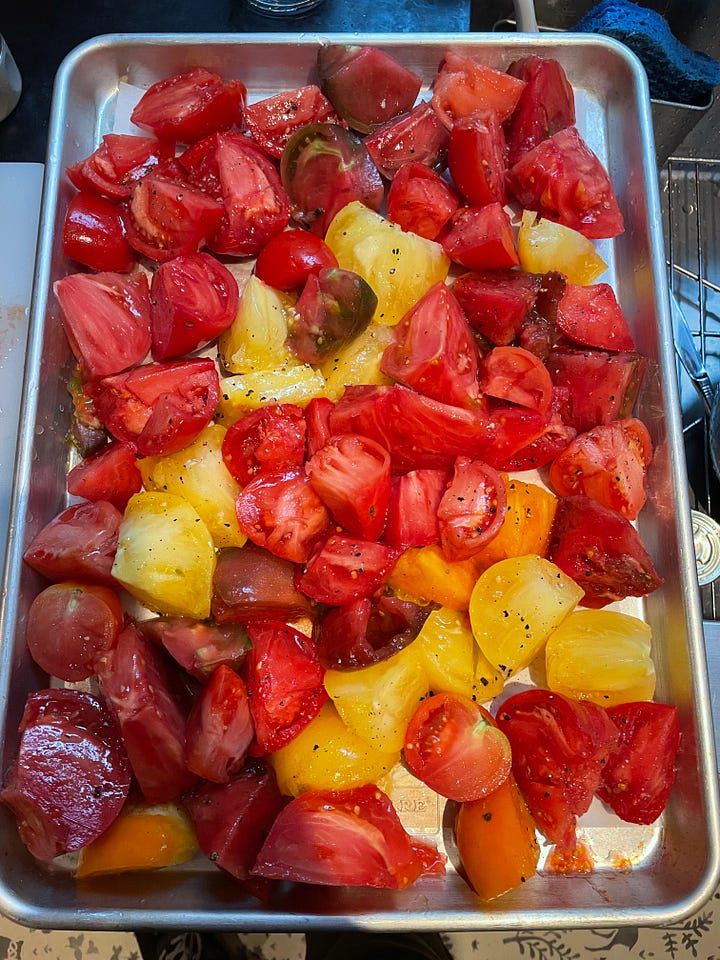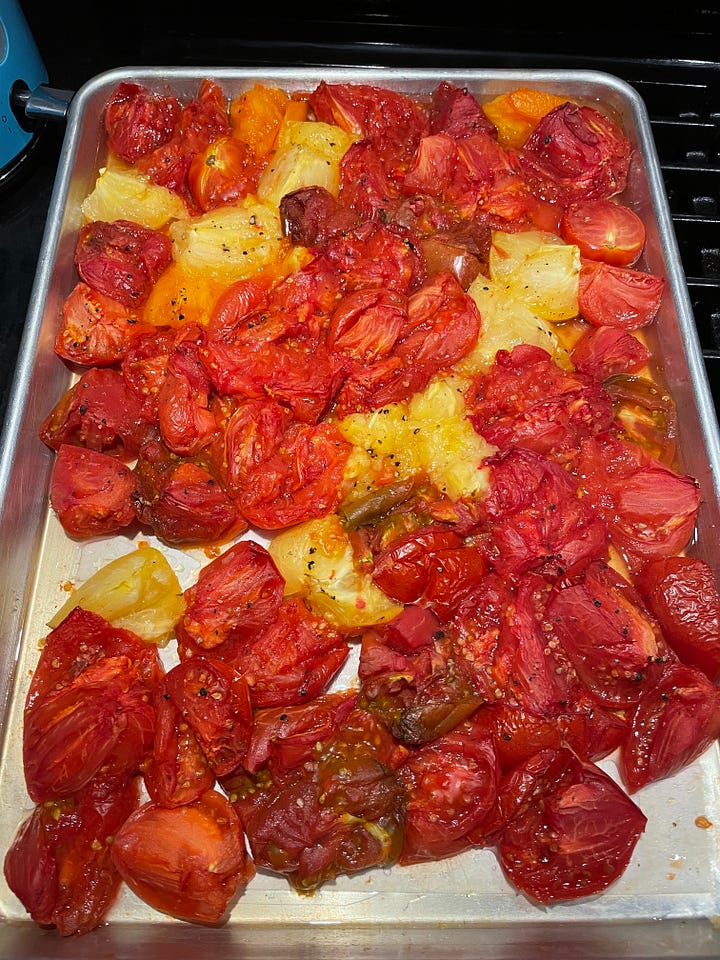What’s happening in the garden this week: Sept. 29-Oct. 5
Weeds, cleanup and putting up tomato sauce for the winter.

Weeds
I’m not the first gardener who, come fall, realizes the diligent weeding that marked the first half of the growing season had fallen off in late summer. While the weeds in our garden are generally under control, things have gotten a little out of hand in a few places. I started off in the blueberry bush bed, which was being invaded by Celandine, Purslane and Crabgrass, among a few other things. I need to get better on identifying weeds, but I think I have those right. I also have some work to do in the vegetable garden beds. Although they’re relatively clear, I find that as I remove spent plants I discover weeds growing in the soil underneath. I like to leave the garden as weed-free as possible for the winter so things get off on the right foot come spring. The same goes for the perennial beds. Our scourge is Bishop’s Weed, otherwise known as Ground Elder, which is a true menace even though its flowers look like Queen Anne’s lace.
Cleanup continues
I started the fall cleanup of the vegetable garden in earnest. I pulled several tomato plants, even those with green tomatoes still on them. We’ll put them aside and fry them for dinner some evening, probably dipped in egg and coated with cornmeal. I also harvested a Long Island Cheese pumpkin and three acorn squash and pulled their vines from the straw bales. I began untangling the browned cucumber vines from the arbor, where they flourished all summer, and I cut down three of our four eggplants, leaving one that still has a couple eggplants growing on it. I’ll give them a week or two to see if the weather stays warm enough.
How I remove plants
One tip I picked up from English gardener Charles Dowding is to cut off plants at the soil level with either a knife or pruning shears, or by twisting them, leaving the root system in the soil. This goes when harvesting heads of lettuce or spinach as well as larger plants like tomatoes or eggplants. You want to remove enough of the old plant so it won’t grow again but disturb the soil as little as possible and leave the root system intact. The roots will decompose in the soil. It’s one of the principles of no-dig gardening.
Saving tomatoes
I still have more tomatoes than I can handle. I’ve canned about 10 pints of paste tomatoes in Ball jars and stored them on a shelf in the basement. This week, I started roasting heirloom tomatoes in the oven and putting them in freezer bags. It’s an easy process. Simply core and quarter the tomatoes and put them in a roasting or sheet pan, drizzle a little olive oil on top and sprinkle them with salt and pepper. You can add onions, garlic or herbs like oregano, thyme or basil if you want. Then roast them in a 250 degree oven for a couple hours until they’ve released their juices and the edges are beginning to look a little cooked. Take the pan out of the oven, allow it to cool, pour off some of the water and put the tomatoes in a gallon-sized freezer bag. That’s it. You can pull it out of the freezer for sauce, soups, stews, and chili.






Matt, I love reading your blog. I find it very relaxing and it brings me to that happy place where I’m working the years, fixing up the house, splitting logs, etc. All things I hope I have more of in the years to come. Hope you and Katie are great. Love following the progress on the house. Love to the fam’!